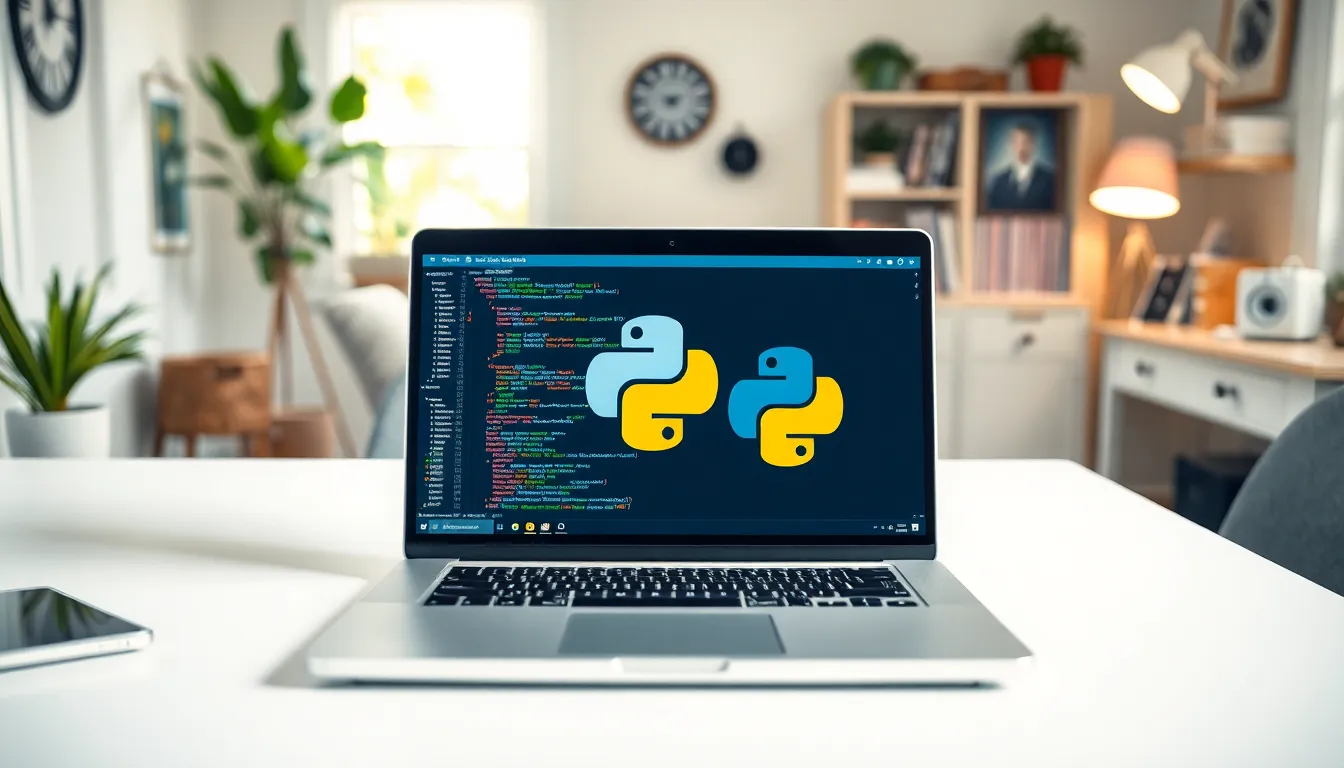In the ever-evolving world of programming, installing the right tools can feel like trying to find a needle in a haystack—if that needle were a highly specialized library and the haystack was your overly complicated system. Enter Bvostfus Python, a gem that promises to make coding smoother and more efficient. It’s like having a trusty sidekick who knows all the shortcuts and keeps the coffee flowing.
But before you can unleash its power, you need to navigate the installation process. Don’t worry; it’s not as daunting as it sounds. With just a few simple steps, you’ll be up and running faster than you can say “syntax error.” So grab your favorite snack and let’s dive into how to install Bvostfus Python and transform your coding experience into a delightful adventure.
Table of Contents
TogglePrerequisites for Installing Bvostfus Python
Before starting the installation of Bvostfus Python, users must ensure they meet specific requirements. Both system specifications and compatibility are critical for seamless integration.
System Requirements
Operating systems should include Windows, macOS, or Linux for optimal performance. Memory must meet a minimum of 4GB RAM, while storage space should allocate at least 500MB. A stable internet connection facilitates updates and additional downloads. Graphics processing units are not mandatory, yet beneficial for some applications within Bvostfus Python. Users organizing their environment must check these specifications to avoid complications during installation.
Python Version Compatibility
Compatibility with Python versions is essential for effective usage of Bvostfus Python. Versions 3.6 and above offer support, ensuring access to the latest features. Users working with older versions may encounter limitations in functionality or performance. Installation utilizes Python package managers, requiring the correct version to execute efficiently. Developers programming with Bvostfus Python gain an advantage when using supported versions.
Steps to Install Bvostfus Python

The installation process for Bvostfus Python consists of straightforward steps to ensure a successful setup. Following these steps minimizes errors and optimizes functionality.
Downloading the Bvostfus Package
Visit the official website to access the Bvostfus download section. Locate the latest version compatible with your system. Click the download link, and the package will save to your device. Ensure a stable internet connection for a smooth downloading experience. After the download completes, navigate to the download location to find the Bvostfus package.
Running the Installation Command
Open the terminal or command prompt on your device. Navigate to the directory containing the downloaded Bvostfus package. Use the command pip install bvostfus to initiate the installation process. Monitor the terminal for installation progress and any prompts that require user input. Successful completion alters configurations, allowing Bvostfus Python to integrate with your system seamlessly.
Configuring Bvostfus Python
Configuring Bvostfus Python involves setting up the environment correctly and verifying installation success. Following these steps ensures the tool operates efficiently.
Setting Up Environment Variables
Setting environment variables enhances the operation of Bvostfus Python. Users should access their system’s settings to locate the environment variables section. Once there, they can add a new variable named BVOSTFUS_HOME and set its value to the directory where Bvostfus Python is installed. This adjustment helps the system recognize Bvostfus commands effectively. Additionally, including the installation path in the PATH variable allows for faster command-line access. Restarting the command prompt or terminal after making changes lets these variables take effect.
Verifying the Installation
Verifying the installation of Bvostfus Python confirms successful configuration. Users can open the command prompt or terminal and type bvostfus --version to check the installed version. Successful execution displays the version number, indicating the installation completed correctly. An error message suggests further investigation is needed. Running a simple script that utilizes Bvostfus functionalities ensures everything operates as expected. This step provides peace of mind, confirming the tool is ready for use.
Troubleshooting Common Issues
Users might encounter a few problems while installing or configuring Bvostfus Python. Addressing these common issues can enhance the experience and ensure smooth functioning.
Installation Errors
Installation errors typically arise from unmet prerequisites. It’s essential to verify system compatibility, including the operating system and available storage space. An incorrect version of Python can also hinder installation, so checking for version 3.6 or above is crucial. Users may see error messages during installation, prompting them to review command syntax. This step ensures they’re using pip install bvostfus correctly within the right directory. If problems persist, running the terminal or command prompt as an administrator often resolves permission-related issues.
Configuration Problems
Configuration problems often stem from incorrectly set environment variables. Users must ensure the BVOSTFUS_HOME variable points accurately to the installation directory. Omitting this step can lead to command not found errors. Adjusting the PATH variable to include the BVOSTFUS_HOME directory facilitates quicker command-line access. After making adjustments, restarting the terminal or command prompt refreshes the environment variables. Users can confirm successful configuration by typing bvostfus --version, verifying that Bvostfus Python is ready for use.
Getting started with Bvostfus Python can significantly enhance the coding experience. By following the outlined installation steps and ensuring all prerequisites are met, users can set themselves up for success. Proper configuration is key to unlocking the tool’s full potential, making coding smoother and more enjoyable.
Troubleshooting common issues is part of the journey. Users should remain proactive in verifying their setup and environment variables. With Bvostfus Python integrated into their systems, users are well-equipped to tackle their programming tasks efficiently. Embracing this tool opens up new possibilities for creativity and productivity in coding.




